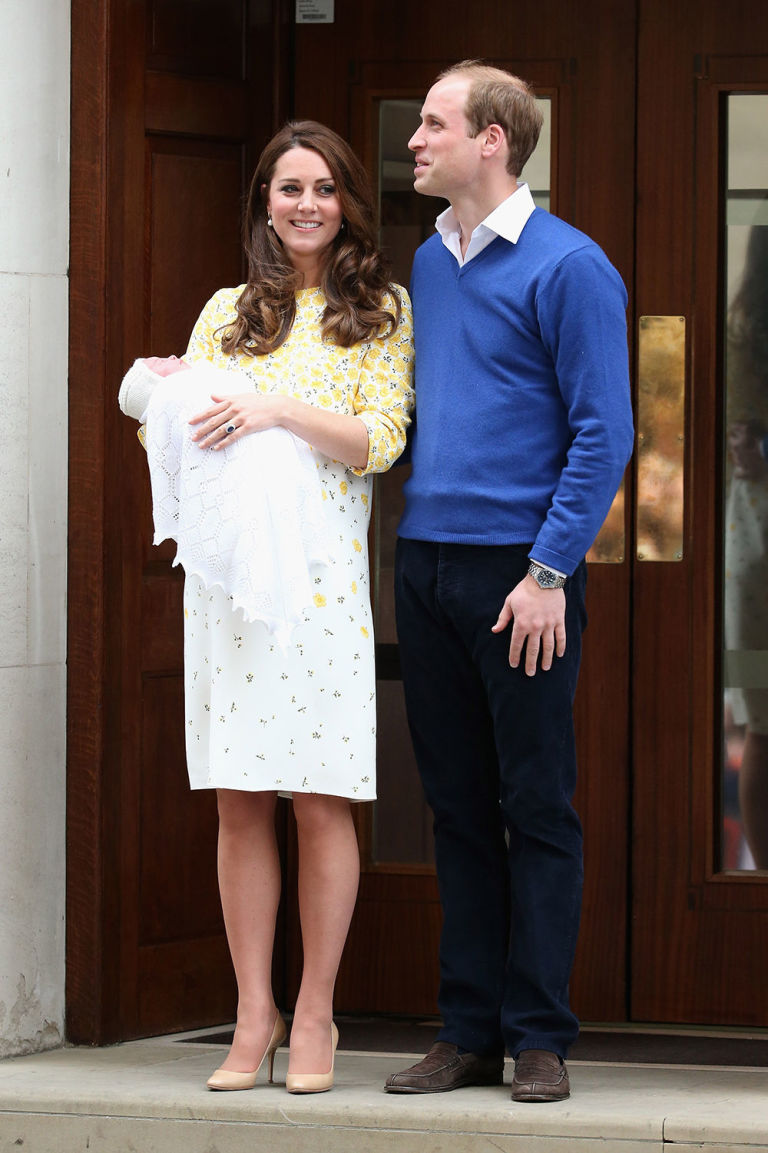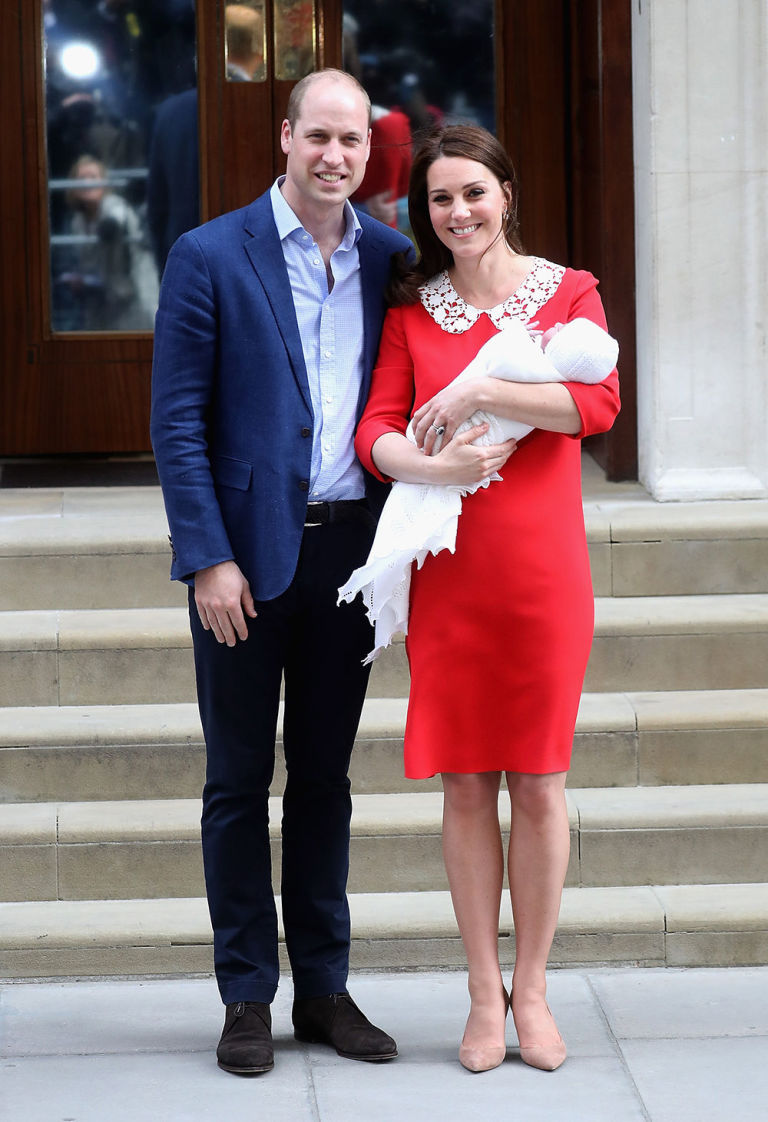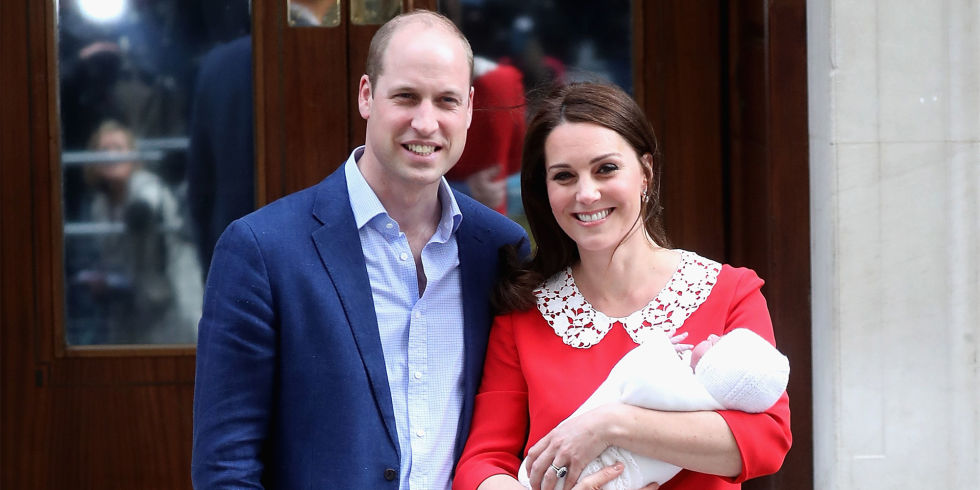For proof that the Duchess of Cambridge has come a long way since delivering her first royal baby in 2013, look no further than her first photos with each child.
You can’t help but notice the way her behaviour has changed. Here, body language expert Blanca Cobb reveals the biggest differences she sees in the royal mum’s body language, beginning with…
Prince George in 2013

Above, Kate grips her newborn with a two-hand hold, pulling the baby in from underneath and around the side with her arms bent to draw him close and high on her chest. ‘She’s holding the baby as if it’s the most precious thing in the world to her,’ Cobb says, acknowledging the situation: They’re presenting their lil’ guy to the masses. ‘When you hold something to your chest and heart, bringing it toward the centre of your body, it’s very loving and protective.’
Meanwhile, Kate’s left fingers are curved. ‘You can tell she’s grabbing him tightly,’ Cobb says, citing possible new-mom jitters, although Kate smiles pleasantly. ‘I’m not getting that she’s nervous from her expression.’ However, she says Kate’s lower body suggests otherwise:
‘You don’t stand with your feet touching when you’re feeling secure—you keep them hip-distance apart for stability,’ says Cobb, noting that the foot placement could have to do with physical comfort – after all, Kate just gave birth.
Princess Charlotte in 2015

Above, Kate’s feet are parted and more stable, Cobb notes – and it makes sense now that Kate has been a mother for two years. Kate holds Princess Charlotte lower on her chest, balancing the baby in the crook of the right arm rather than encircling the newborn. ‘The underhand hold shows she’s truly more relaxed as a second-time mum. She’s already figured out the best way to hold the baby – you have to read them in the moment,’ Cobb says. ‘It’s doesn’t mean she loves the baby less – absolutely not! After two years as a mom, you know the baby isn’t going to fall. Maybe Prince George liked being held closer.’
With Kate’s free hand, she rests a palm over the baby, and you can see from lack of tension in the joints that her fingers are relaxed, with little space between them. ‘You spread your fingers to take up more space when you need a better grasp on the baby or want to provide comfort, but the baby is peaceful in this photo,’ Cobb says. ‘You can tell Kate feels confident she’s got Princess Charlotte in a good hold.’
Baby Prince in 2018

Cobb sees similarities in the way Kate cradles her newborn and the way she held Prince George. ‘She’s bringing the baby close to her chest and heart but with a more relaxed grip – she’s not clutching as much as she did with Prince George,’ Cobb says.
The biggest difference, however, is in Kate’s facial expression. ‘Look at that smile!’ Cobb says. ‘Her cheeks are pushed up in a genuine grin with her eye lids closed a bit – this is a very happy moment for her.’
Above, you can see her footing is a bit more stable than the first time around, although it regresses from her sturdy stance with Princess Charlotte. ‘We don’t know what is going on with her body physically, since childbirth does a number on your body,’ Cobb says. ‘Being healthy enough to walk out but doesn’t mean you’re 100 percent comfortable. She deserves a medal.’
The Bottom Line
‘Kate definitely appears to have become more relaxed and comfortable as a mother – and in the public eye – throughout her last three pregnancies,’ Cobb says, adding a note about Prince William: ‘In all three series of photos, he’s consistently supporting Kate by standing behind her.’ Too cute!













